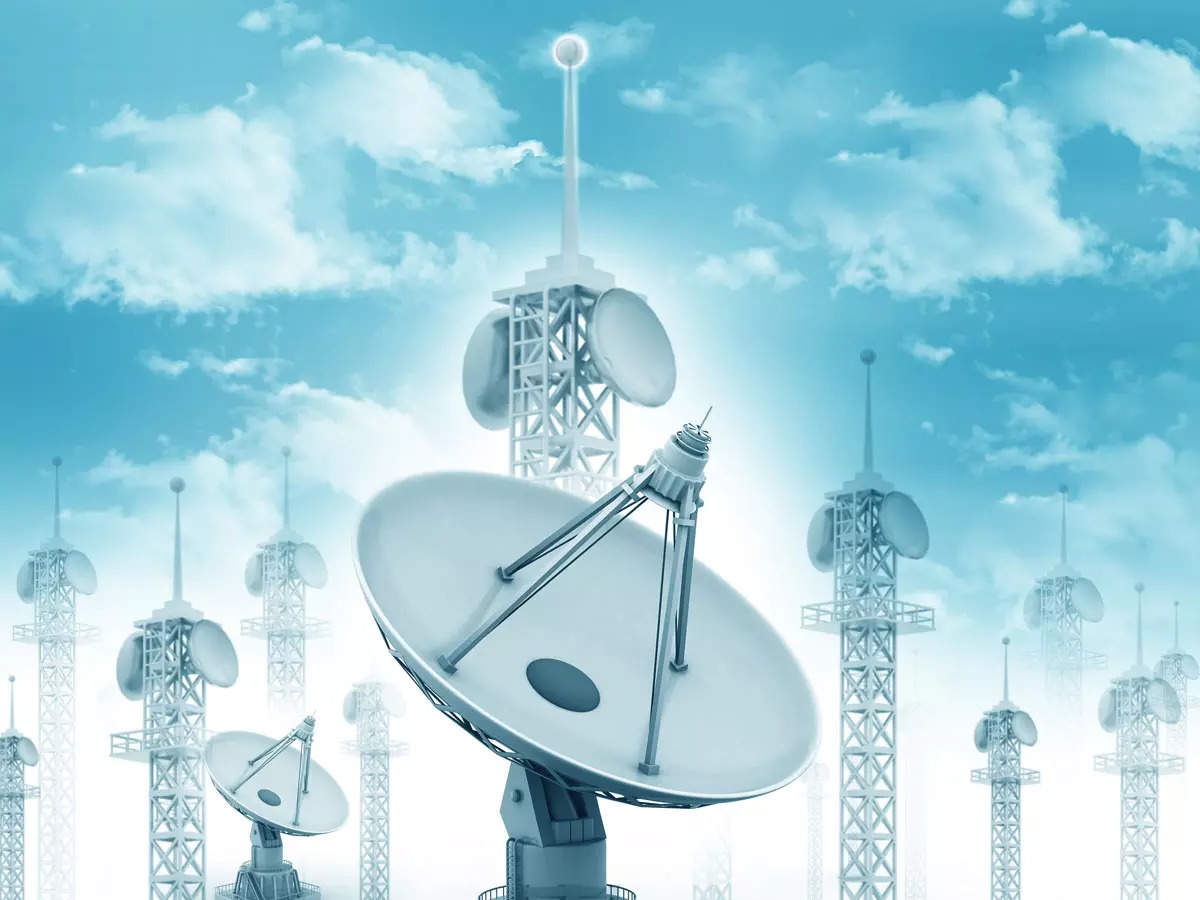
[ad_1]

India’s telecom wars reached from sky to space last year when India’s two dominant telecom players, Bharati Airtel and Reliance Jio, found themselves on a new battlefront — the satellite communication or satcom, a futuristic technology that promises to revolutionise India’s telecom sector.
Companies such as Reliance Jio’s JV with Luxembourg-based SES; Starlink; Amazon; Bharti-backed OneWeb; and the Tata-Telesat combine are working on creating a constellation of satellites to deliver ‘broadband-from-space’ services in India.
India’s current telecom market has just two big players, Reliance Jio and Bharti Airtel, but satcom will attract more big players. Since satcom does not require installation of towers on earth, the entry barrier is not as formidable as it is in traditional terrestrial mobile telecom.
That’s why the satcom sector is witnessing more intense rivalry even before the start of services. Airtel and Jio stand sharply divided on various issues related to satcom and have battled each other over complexities that surround satcom. The rivalry between the two biggies, with other satcom players also divided sharply, continues. A few days ago, they locked horns over the usage and price of satcom.
What exactly is satcom?
Satcom, as the name suggests, uses satellites for communication, especially internet connectivity, as against traditional terrestrial networks which are based on cables and towers. In satcom or satellite broadband, internet service providers send an internet signal to a satellite in space, which then comes back to the users and is captured by their satellite dish. The dish is connected to the user’s modem, which finally connects their computer to the internet signal. This process then reverses back to the internet service provider and is repeated every time.
Earlier, most satellite internet came with larger equipment, including a dish, but nowadays most internet providers have smaller, more compact equipment. Most satellite internet now only comes with a modem, wireless router and network cable. Earlier, geostationary (GEO) satellites were used for satcom, but now low-Earth orbit (LEO) as well as medium-Earth orbit (MEO) satellites are used.
The promise of satcom is broadband connectivity in places where terrestrial networks can’t operate as well as in emergency situations. For instance, Musk’s Starlink had offered internet connectivity through satcom in the war-torn Ukraine. In comparison with cable broadband internet, internet through satcom is slower and more expensive.
Why are big players wrangling over satcom?
Satcom marks a very important evolution in telecom, and that’s why all the big players are eager to rush into this new sector. Satcom can act as a frontline service in regions where fibre-cable connectivity may not be feasible and in disaster situations to keep essential services, including banking, up and running It can also be a tremendous support in rural and remote areas, especially in northeast and other hilly areas, and also serve as a backup in islands. Satcom can also prove to be a support to business continuity and maintaining seamless banking services, particularly ATM operations, during natural calamities and conflicts.
Another advantage of satcom is its potential to enhance resilience and redundancy in internet connectivity. Traditional terrestrial infrastructure is susceptible to natural disasters, infrastructure failures or deliberate attacks during conflicts and wars. As it diversifies internet access, satellite-based network can serve as an alternative or backup option, ensuring connectivity remains intact even during disruptions to traditional systems.
The great Indian telecom divide
Last year, telecom players had engaged in a fierce debate over how the satcom spectrum should be given to private companies. A key consultation paper floated by the Telecom Regulatory Authority of India (Trai), seeking views on the mode of allotment of satellite spectrum, led to a flurry of submissions and counter-submissions by companies on either side of the great divide — auction versus allocation of satellite spectrum.
OneWeb-Bharati and Starlink, Amazon and Canada’s Telesat, which has a tie-up with Tata, told telecom regulator Trai that auctioning satellite airwaves would make the business of satellite communications unviable. They contended that auctions would make broadband from space services unaffordable and deprive consumers, particularly in rural and underserved regions, of high-speed broadband connectivity. These companies argued that satellite spectrum can’t be broken down into exclusive blocks or chunks as in the case of terrestrial airwaves for auctions as it’s a shared resource. Auctioning these airwaves would cause fragmentation, trigger inefficiencies and go against the spectrum management rules laid down by the International Telecom Union as well as India’s National Frequency Allocation Plan.
Bharti Enterprises Chairman Sunil Mittal stated that spectrum for satcom services can’t be auctioned on the lines of 5G as these airwaves are shared, required only in limited areas, and also the business is not going to make billions of dollars of revenue. Industry body Indian Space Association (ISpA) too favours allocation over auction.
However, Mukesh Ambani-owned Jio strongly backed the auction route. In its submission, it called on Trai to ensure that spectrum assignment rules for networks offering competing services are uniform and fair, without granting any stakeholder preferential treatment solely based on network topology or architecture. Jio said that administrative assignment of spectrum refers to an approach where airwaves are allocated on a first-come, first-served basis,, a methodology that has faced criticism and scrutiny, including from the Supreme Court.
Vodafone Idea said the spectrum from 27.5 GHz to 29.5 GHz (including 27.5 GHz to 28.5 GHz) should be put to auction, as per the Supreme Court order of 2012 and the principle of same service, same rules. Amazon countered this, saying the apex court’s 2G judgment, when viewed in the broader context of a subsequent 2012 five-judge presidential reference ruling and several other Supreme Court decisions, did not bind the Indian government to assign spectrum only through auctions.
However, settling the issue once and for all, the Telecommunication Bill passed in December last year, provided for administrative allocation of satellite spectrum instead of auctioning it. In the immediate term, the government will allocate spectrum without auctions to satellite players only for point-to-point connections and not for direct transmission of services to retail consumers, ET has reported based on information from sources. The Department of Telecommunications (DoT) is finalising the modalities around administrative allocation of satellite spectrum,
Jio and Airtel are again at odds
A new sticking point has emerged between India’s two telecom rivals after the auction-versus-allocation debate got settled. Reliance Jio has written to the telecom department saying it should not allow satellite spectrum allocated administratively to be used for commercial services like fixed wireless access (FWA), as it’s a 5G use case and should be offered only through auctioned spectrum.
Fixed wireless access service is high-speed wireless broadband as opposed to the broadband traditionally provided through copper wires and then through optic fibre cables.
Jio has also said that in case the Department of Telecommunications decides to allow FWA for satcom players, the extra amount paid by companies for buying spectrum in an auction should be refunded, officials aware of the matter told ET, citing Reliance Jio’s letter to the DoT.
“The spectrum allocation to any entity for providing commercial services should be done through auction only,” Reliance Jio told DoT. Else, to maintain a level-playing field, the companies which have bought spectrum in an auction for deploying FWA service, should be revalued on the principle of administrative allocation and the balance amount should be returned to them, Jio said.
However, Bharti-backed Eutelsat OneWeb has rejected Jio’s contention that administratively allocated satellite spectrum can’t be used for offering commercial FWA services merely since it is a 5G use case, ET has reported. Eutelsat also thinks 5G-based FWA and satellite-based FWA are distinct services with different business models and there is no justification in Jio pushing the government to ensure ..
“Jio is unnecessarily trying to confuse matters by comparing apples with oranges. It’s a clear fact that 5G-based FWA services will be directly offered by telcos to millions of retail users across India whereas satellite-based services will only be offered in the country’s remote, unconnected regions, primarily to enterprises, defence forces, government health centres and for disaster management operations via a B2B model,” a senior Eutelsat OneWeb executive was quoted in an ET report. Eutelsat OneWeb, in fact, asserts that it is not in competition with Jio as it will not be directly offering satellite-based FWA services to retail users.
Both Airtel and Jio have started offering 5G FWA services to retail users in the country, mainly in areas where laying fibre is a challenge. Telcos globally, including Airtel and Jio, are counting on 5G-based FWA services to break the 5G monetisation logjam and open new revenue streams. Management consulting firm Analysys Mason estimates monthly average revenue per user (ARPUs) from 5G FWA business to be at least three times more (about Rs 600) than 5G mobile ARPUs. That’s why there are apprehensions over the possible use of satcom for offering commercial FWA.
[ad_2]
Source link

